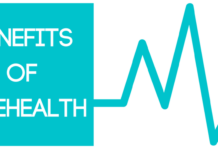A new era in aesthetic medicine is taking shape in 2025, defined by the phenomenon of “filler fatigue” and a powerful shift toward subtle, natural cosmetic enhancements. Where once dramatically plumped lips and overfilled cheeks defined the beauty standard, patients and practitioners are now increasingly seeking rejuvenation methods that enhance features without sacrificing personal expression or unique facial character.
What Is Filler Fatigue?
Filler fatigue refers to the unwanted consequences of repeated or excessive dermal filler injections. Over time, the skin can become stretched, features distorted, and the once-desired youthful look replaced by puffiness, imbalanced proportions, or very obvious signs of intervention (Genesis Medspa, 2025; Hindustan Times, 2025). Common signs include:
- A swollen or “pillowy” appearance
- Lack of natural movement due to product buildup
- Distorted or artificial-looking facial contours
- Dependency on fillers just to maintain structure
Experts explain that filler fatigue arises from overuse, poor placement, frequent touch-ups without adequate time for dissolution, and failure to adapt injection points to unique anatomy (Genesis Medspa, 2025; Hindustan Times, 2025; Aesthetic Guide, 2025).
Why Is This Trend Changing?
Several factors are driving this shift:
- Changing Aesthetic Ideals: There is a mass movement away from the “overdone” look toward results that preserve natural expressions and unique beauty (Clinic by La Ross, 2025).
- Social Media Transparency: Celebrities and influencers sharing experiences with dissolving fillers or seeking subtler “tweakments” have made a softer approach aspirational (Hindustan Times, 2025).
- Patient Education: Today’s aesthetic consumers are savvy; they want natural results, seek out experienced providers, and are alert to the risks of overfilling (Genesis Medspa, 2025; Acquisition Aesthetics, 2025).
The Rise of Subtle Interventions
Subtlety and restraint are the hallmarks of the next wave in aesthetic medicine. Here is how practitioners are responding to filler fatigue:
1. Microdosing and Strategic Placement: Instead of large volumes, microdosing filler and neuromodulators (“Baby Botox”) enhances features with minimal product, focusing on harmony and movement rather than dramatic changes (Acquisition Aesthetics, 2025; Healthy Looks, 2025).
2. Regenerative and Collagen-Stimulating Injectables: Collagen stimulators like Sculptra and Radiesse encourage the body’s own repair processes, gradually rebuilding lost volume and improving skin texture without obvious swelling (Genesis Medspa, 2025; Beauty News Daily, 2025). Skin boosters and polynucleotides further support hydration and elasticity from within.
3. Advanced Techniques and Individualized Plans: The best results now come from facial mapping, comprehensive consultation, and anatomy-led techniques. Blunt-tip cannulas offer more natural filler distribution, and bespoke treatment plans are created for each client’s anatomy, age, and goals. “One size fits all” is out (Acquisition Aesthetics, 2025; Clinic by La Ross, 2025).
4. Combination and Non-Invasive Treatments: Many are turning to treatments like radiofrequency and laser skin tightening, microneedling with platelet-rich plasma (PRP), and advanced facials for improved tone and texture with no added volume (Genesis Medspa, 2025; Beauty News Daily, 2025).
5. Less Is More and This Is Luxury: Subtlety is now synonymous with quality. Whether it’s hydrated lips instead of plumped ones or focusing on skin health and “prejuvenation,” a refreshed, undetectable enhancement, also called the “quiet luxury” of beauty, is the new ideal (Clinic by La Ross, 2025; Hamilton Fraser, 2025).
Humanizing the Shift
Patients report positive emotional outcomes with more natural enhancements improved confidence, lower anxiety over appearing “overdone,” and a feeling that their best self, not a different person, is what others see. Practitioners emphasize conversation, listening, and ongoing relationships rather than quick fixes.
In 2025, the concept of beauty in aesthetic medicine is evolving. Filler fatigue has not only changed techniques but also mindsets, making way for artistry, science, and a celebration of subtle individuality. The future belongs to those who understand that sometimes, less truly is more.
References
- Acquisition Aesthetics. (2025, June 19). The undetectable aesthetic trend patients want in 2025. https://www.acquisitionaesthetics.co.uk/blog/undetectable-aesthetic-trend-2025/
- Beauty News Daily. (2025, April 10). 5 best non-invasive beauty treatments of 2025. https://beautynewsdaily.com/the-best-non-invasive-beauty-treatments/
- Clinic by La Ross. (2025, May 16). What’s trending in aesthetic medicine for 2025? https://www.clinicbylaross.co.uk/post/what-s-trending-in-aesthetic-medicine-for-2025
- Genesis Medspa. (2025, March 17). Filler fatigue: What it is and how to avoid overdoing it. https://www.genesis-medspa.com/filler-fatigue/
- Hamilton Fraser. (2025, February 7). Hamilton Fraser’s top 10 aesthetic treatment trends for 2025. https://www.hamiltonfraser.co.uk/content-hub/aesthetic-trends-technologies
- Hindustan Times. (2025, February 6). Filler fatigue explained: Is the era of overdone fillers over? https://www.hindustantimes.com/htcity/htcity-showstoppers/filler-fatigue-explained-is-the-era-of-overdone-fillers-over-101738748117840.html
- Healthy Looks. (2025, January 28). Cosmetic injection trends 2025: What’s new and effective. https://www.healthylooks.com/cosmetic-injection-trends-2025-whats-new-and-effective









